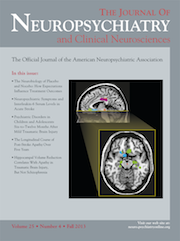Combination of BK Channel Opener and Kv4 Channel Inhibitor for Treatment of Cerebellar Ataxia in Mutant Med Mice
To the Editor: Purkinje cells constitute the sole output of the cerebellar cortex. They play pivotal roles in maintaining balance and regulating movement by modulating the firing response of the deep cerebellar nuclei.1 Electrophysiological dysfunction of Purkinje cells brings about cerebellar ataxia. Accordingly, rescue of Purkinje cells could have important therapeutic implications. In spite of major progress in detecting the genetic and molecular mechanisms of ataxia, proven pharmacological treatment of cerebellar ataxia is still lacking.2 Therefore, the major challenges for future research are the recognition of new drug targets. As a result of the diversity of ataxias, symptomatic therapeutic approaches that modify ataxia without interfering with underlying molecular mechanism must be seriously considered.3 There is an obvious medical need to develop anti-ataxic drugs with confirmed efficacy. With the discovery of ion channelopathies, the therapeutic value of many basic drugs targeting ion channels has been confirmed. A growing body of evidence indicates that potassium channel-blockers and openers may exert an important neuroprotective effect in different diseases of central nervous system.4
Purkinje cells in mutant med mice who lack expression of the Scn8a gene, which encodes the NaV1.6 protein, have shown a decrease in the rate of spontaneous action-potential firing. Thus, these mice are ataxic.5 Restoring the Purkinje cell output to the normal condition can reduce ataxia in mutant med mice. We propose that BK channel activators and Kv4 channel inhibitors may restore the med Purkinje cell output to normal condition. Proposed drugs for this purpose are acetazolamide (ACTZ), a BK channel-opener, and 4-aminopyridine (4-AP), a Kv4 channel-inhibitor. To determine how the output of med Purkinje cells restore the normal conditions, computer simulations of the electrical behaviors of Purkinje cells can be performed. Computational models of cells have become important tools for investigating different aspects of the behavior of the cells. The simulation environment allows change the properties of the specific ion channels as the possible mechanism of action of neuroprotective drugs. This is a good way to imitate cell response in the presence of channel blockers and activators, without any concern about the blocker side effects or other uncontrollable parameters that may affect the results in the experiments.
We propose that 4-AP and ACTZ or a combination of them can be an effective treatment to help reduction of ataxia in med mice, and this hypothesis can be tested in a simulation environment.
1 : Decreases in the precision of Purkinje cell pacemaking cause cerebellar dysfunction and ataxia. Nat Neurosci 2006; 9:389–397Crossref, Medline, Google Scholar
2 : Pharmacological treatments of cerebellar ataxia. Cerebellum 2004; 3:107–111Crossref, Medline, Google Scholar
3 : Update on degenerative ataxias. Curr Opin Neurol 2011; 24:339–345Crossref, Medline, Google Scholar
4 : Potassium channel blockers inhibit the triggers of attacks in calcium channel mouse mutant tottering. J Neurosci 2005; 25:4141–4145Crossref, Medline, Google Scholar
5 : The contribution of resurgent sodium current to high-frequency firing in Purkinje neurons: an experimental and modeling study. J Neurosci 2003; 23:4899–4912Crossref, Medline, Google Scholar



